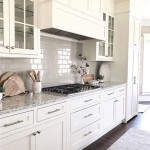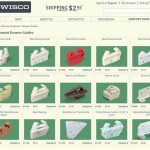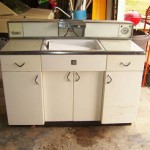Can You Use Wood Cabinets For An Outdoor Kitchen?
The allure of an outdoor kitchen lies in the ability to seamlessly blend culinary pursuits with open-air enjoyment. Planning such a space involves numerous considerations, from selecting appliances to determining the overall layout and aesthetic. Among the pivotal decisions is the choice of cabinetry, and a frequent question arises: can wood cabinets be utilized in an outdoor kitchen environment? The answer is complex and dependent on a multitude of factors, ranging from the specific climate to the type of wood employed and the protective measures implemented.
Wood, inherently a natural and aesthetically pleasing material, offers warmth and character that many find desirable for interior spaces. However, its organic composition renders it susceptible to the elements. Prolonged exposure to moisture, sunlight, and fluctuating temperatures can lead to warping, cracking, rot, and insect infestation. Therefore, using standard indoor wood cabinets directly in an outdoor kitchen setting without careful planning and precautions is generally inadvisable.
The key to successfully incorporating wood cabinetry into an outdoor kitchen lies in understanding its vulnerabilities and mitigating those risks through strategic material selection, design adaptations, and consistent maintenance. The level of protection required will depend on whether the kitchen is fully exposed, partially covered, or located in a climate with mild weather conditions. A fully covered outdoor kitchen under a substantial roof offers significantly more protection than one exposed to direct sunlight and rain.
Wood Selection: Choosing the Right Species
The type of wood chosen is a paramount consideration. Not all wood species are created equal when it comes to resisting the elements. Certain hardwoods possess natural oils and densities that make them inherently more durable and resistant to moisture and decay. These species are often referred to as "weather-resistant" or "rot-resistant" woods.
Examples of suitable wood species for outdoor cabinetry include: *
Teak:
Widely regarded as one of the best options for outdoor use, teak is naturally rich in oils that repel water and insects. Its tight grain and high density contribute to its exceptional durability. Teak is often used in boat building and high-end outdoor furniture, reflecting its ability to withstand harsh conditions. This inherent resistance means that teak requires less maintenance than other wood species, although it will naturally fade to a silver-gray patina over time if left untreated. *Cypress:
Another excellent choice, cypress contains a natural preservative called cypressene, which makes it resistant to rot and insects. It's also relatively stable, meaning it's less likely to warp or crack with changes in moisture levels. Cypress offers a lighter color than teak and can be easily stained or painted to match a specific aesthetic. *Cedar:
Cedar is known for its aromatic oils, which act as a natural insect repellent and contribute to its resistance to decay. It's also relatively lightweight and easy to work with, making it a popular choice for outdoor projects. Cedar is available in a variety of colors, from light reddish-brown to darker tones. *Mahogany:
A dense hardwood with a reddish-brown color, mahogany is prized for its beauty and durability. It's relatively resistant to rot and insects, although it's not as naturally resistant as teak or cypress. Mahogany requires a good sealant or finish to protect it from the elements. *Ipe:
This Brazilian hardwood is incredibly dense and durable, making it highly resistant to moisture, rot, and insects. Ipe is one of the hardest woods available and can withstand extreme weather conditions. Its dark brown color and smooth texture make it an attractive option for outdoor cabinetry. However, its density can make it more difficult to work with.It is crucial to source wood from reputable suppliers and ensure it is properly dried and treated before construction. Kiln-dried wood is preferable, as it has a lower moisture content, reducing the risk of warping and cracking. Pressure-treated wood, while extremely resistant to rot and insects, contains chemicals that may not be desirable for use in food preparation areas. Consider the aesthetic preferences, budget constraints, and availability of these various wood species when making a selection.
Protective Measures: Sealing, Finishing, and Design Considerations
Even with the selection of weather-resistant wood, additional protective measures are essential to prolong the life of outdoor cabinets. These measures include proper sealing, finishing, and design considerations that minimize exposure to the elements.
Sealing and Finishing:
Applying a high-quality sealant or finish is crucial to protect the wood from moisture penetration and UV damage. Several options are available, each with its own advantages and disadvantages: *Marine-grade varnish:
This type of varnish is specifically designed for use on boats and other marine applications, providing excellent water resistance and UV protection. It's durable and long-lasting but requires regular maintenance and reapplication. *Spar urethane:
Similar to marine varnish, spar urethane offers good water resistance and UV protection. It's more flexible than standard polyurethane, making it less likely to crack or chip with temperature changes. *Exterior-grade paint:
Painting the cabinets provides a protective barrier against moisture and sunlight. Choose a high-quality exterior paint specifically formulated for wood. *Penetrating oil finishes:
These finishes, such as teak oil or linseed oil, penetrate the wood and help to repel water. They provide a natural look and are easy to apply, but they require more frequent reapplication than varnishes or paints.Regardless of the chosen finish, proper application is critical. This typically involves multiple coats, sanding between coats, and ensuring that all surfaces, edges, and joints are thoroughly sealed. It's also important to maintain the finish and reapply it as needed to prevent the wood from deteriorating.
Design Considerations:
The design of the cabinets themselves can also play a significant role in their longevity. Incorporating features that minimize water exposure and promote ventilation is essential. *Overhanging countertops:
A countertop that extends beyond the face of the cabinets can help to deflect rainwater and protect the cabinet doors and drawers. *Raised cabinet bases:
Elevating the cabinets off the ground with a platform or legs prevents direct contact with moisture and improves ventilation. *Well-designed drainage:
Consider incorporating drainage holes or grooves in the cabinet doors and drawers to allow water to escape. *Covered storage:
A covered area, such as a pergola or roof, can provide significant protection from the elements and extend the life of the cabinets.Furthermore, consider using stainless steel hardware, which is resistant to rust and corrosion. Avoid using iron or steel hardware, which can rust and stain the wood.
Alternatives to Solid Wood: Exploring Durable Options
Recognizing the inherent challenges of using solid wood in an outdoor environment, several alternative materials offer enhanced durability and require less maintenance. These alternatives can provide a similar aesthetic to wood while offering superior resistance to the elements.
Some popular alternatives include:
*Marine-grade plywood:
This type of plywood is specifically designed for use in marine applications and is highly resistant to water damage. It's made with waterproof adhesives and a durable veneer, making it a good option for cabinet construction. *Polymer cabinets:
Constructed from high-density polyethylene (HDPE), these cabinets are completely waterproof and resistant to rot, insects, and UV damage. They require virtually no maintenance and come in a variety of colors and styles. *Stainless steel cabinets:
Stainless steel is an extremely durable and weather-resistant material that's ideal for outdoor kitchens. It's easy to clean and won't rust or corrode. However, stainless steel cabinets can be more expensive than wood or polymer cabinets. *Concrete cabinets:
Concrete is a strong and durable material that can withstand extreme weather conditions. It can be cast into a variety of shapes and finishes, offering a unique and modern look. However, concrete cabinets can be heavy and require professional installation. *PVC Board Cabinets:
PVC board is a synthetic material made from polyvinyl chloride. It is waterproof, insect-proof, and resistant to rot and decay. PVC board is also lightweight and easy to work with, making it a popular choice for DIY projects.When considering these alternatives, it's important to weigh the cost, aesthetic appeal, and maintenance requirements of each option. Polymer cabinets, for example, offer excellent durability and low maintenance, but they may not have the same natural warmth and character as wood. Stainless steel cabinets are extremely durable but can be more expensive and may require a more modern aesthetic. Carefully evaluate individual needs and preferences to determine the best material for outdoor kitchen cabinetry.

Outdoor Wood Cabinets Vs Stainless Steel

Wood Outdoor Kitchen 5 Disadvantages An Easy Diy Solution

Outdoor Kitchens Edgewood Cabinetry

How To Build An Outdoor Kitchen Cabinet Part 2

Best Wood For Outdoor Kitchens Advantagelumber Blog

Outdoor Wood Cabinets Vs Stainless Steel
Outdoor Kitchen Options In Philadelphia Airy Kitchens

Outdoor Kitchen Cabinets Landscaping Network

Outdoor Grill Cabinets L Trex Kitchens

Outdoor Kitchen Cabinet Materials The 5 Most Popular Types Outeriors
Related Posts








